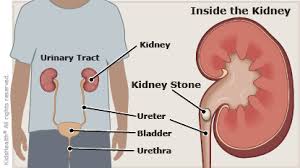Emergencies can occur at any time, generally when we least anticipate them. In such extreme situations, the ability to respond effectively might be the difference between life and death. A strong foundation in CPR and first aid is crucial in such situations. In this thorough book, we’ll review the crucial first aid and CPR techniques everyone should know, equipping you with the abilities you need to be a successful first responder.
When tackling household chores, having a reliable supply of cleaning wipes can make the process much quicker and more efficient.
First Aid and CPR’s Importance
The Significance of CPR and First Aid
Before diving into the specifics of CPR and first aid skills, let’s first understand why they are crucial.
- Immediate Action Saves Lives
In critical scenarios like cardiac arrest, choking, or severe injuries, time is of the essence. CPR and first aid enable you to take immediate action, maintaining a person’s chances of survival until professional medical assistance arrives.
- Empowerment in Crisis
You become a more capable first responder if you know CPR and first aid. In an emergency, you may act with confidence rather than feeling powerless, saving lives and lessening the severity of injuries.
- Community Stability
Communities are better prepared to manage crises when more people are trained in CPR and first aid. Your expertise helps to ensure the general security and well-being of your neighborhood.
Essential CPR Skills
What is CPR?
When someone’s heartbeat or breathing has stopped, cardiopulmonary resuscitation (CPR) is performed to save their life. Its main objective is maintaining blood and oxygen supply to vital organs, especially the brain, until normal cardiac activity has resumed.
When is CPR Necessary?
CPR is required in various emergency scenarios, including:
- Cardiac Arrest: When the heart ceases to beat or beats irregularly.
- Choking: In cases where a person is choking and becomes unresponsive.
- Drowning: When an individual has nearly drowned and is unresponsive.
- Severe Trauma: In instances of severe injuries leading to cardiac arrest.
Mastering Hands-Only CPR
Hands-only CPR is a simplified method that anyone can perform, even without formal training. Here’s a step-by-step guide:
- Check for Responsiveness: Ensure the person is unresponsive. Gently tap and shout, “Are you okay?”
- Commence Chest Compressions: Kneel beside the person and place the heel of your hand on the center of their chest, just below the nipple line.
- Use Your Body Weight: Lock your elbows and use your upper body weight to push down hard and fast. Compress the chest at least 2 inches deep and maintain a rate of 100-120 compressions per minute.
- Continue Compressions: Keep up the chest compressions until professional help arrives or until the person shows signs of life.
Remember, the effectiveness of CPR lies in acting promptly and providing continuous compressions. Hands-only CPR eliminates the need for rescue breaths, making it accessible and effective.
Essential First Aid Skills
Assessing the Situation
Before administering first aid, assessing the situation for safety is crucial. If hazards are present, address them first or move the person to a safer location.
Treating Cuts and Scrapes
- Minor wounds like cuts and scratches are frequent and need prompt care:
- To clean the wound, gently rinse it under clean, running water to remove dirt or debris.
- Apply an antiseptic: Cleanse the wound with an antiseptic solution or wipes.
Dealing with Burns
- Burns can be moderate or severe, and different treatments are used for each:
- Run cold water over the burnt area for 10 to 20 minutes to relieve mild burns.
- Cover with a Clean Cloth: Wrap it in a bandage or clean, non-stick cloth after the burn has cooled.
- Seek Medical Attention: If you have serious burns or burns that cover a large region, you should get medical help right away.
Managing Fractures and Sprains
Fractures and sprains require careful handling to prevent further injury:
- Immobilize the Area: If you suspect a fracture or sprain, immobilize the injured area using a splint, bandage, or improvised support.
- Elevate the Limb: Elevate the injured limb to reduce swelling.
Conclusion
A proactive step toward becoming a responsible and prepared member of society is arming oneself with fundamental CPR and first aid knowledge. These abilities are for everyone; they are not only for medical experts, and they have the potential to save lives.
You may contribute to your community, place of employment, and family by learning and using CPR and basic first aid. You are ready to respond quickly when it counts, perhaps saving lives and lessening the severity of injuries.
Always remember that being a first responder implies being ready, sure of yourself, and capable in urgent situations. Beginning today, you can become a genuine lifesaver by learning CPR and first aid.





